
Summer 2018 seems to be the season for platform adventures and roguelites. Last week La-Mulana 2 brought us a retro-themed Metroidvania that was heavy on puzzles, traps, and fairly simplistic combat. This week we have Dead Cells’ take on the same genre with its emphasis on challenging combat, randomized level layouts, and unlocking rewards both temporary and permanent over the course of many playthroughs.
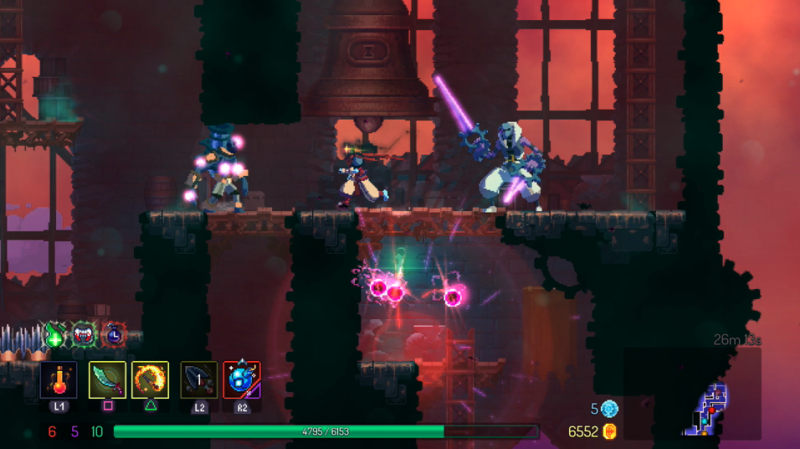
Developer Motion Twin has created something slick out of otherwise familiar components with Dead Cells. Since at least 2008 with Derek Yu’s Spelunky, and assorted follow-ups like Edmund McMillen’s The Binding of Isaac, Hopoo Games’ Risk of Rain, and Rogue Legacy by Cellar Door Games, developers keep returning to the roguelike well to pump up some more ideas that they can transpose onto other genres. Procedural level generation, permadeath, sometimes combined with unlocking new bonuses for future playthroughs, are all hallmarks of the “roguelite” game. Dead Cells combines these well-tested ideas with an overall game design that resembles Castlevania: Symphony of the Night and its modern sequels.
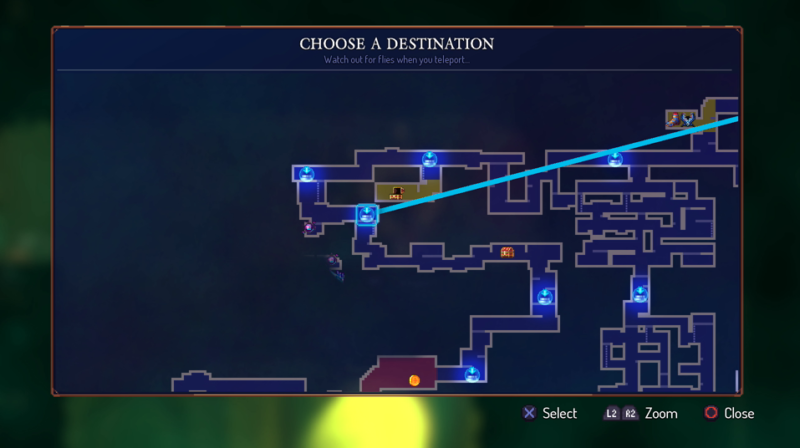
Dead Cells is a platformer that calls for players to make constant leaps, double jumps, and rolls to progress through its stages. Levels are essentially large dungeons filled with networks of rooms, hallways, bridges, and pitfalls that the player navigates both horizontally and vertically. As they go along, a map of the current level fills in with visual information about doors, elevators, merchants, and more. In this way Dead Cells plays out like navigating miniature, themed sections of Dracula’s massive castle from Symphony of the Night, but with subtle variations to the levels each playthrough. Teleportation pads are littered about generously, allowing for quick jumps between different branches of the labyrinths. Later on, more parts of the environment can be interacted with after obtaining some special items: climbable vines erupt out of green blobs, statues offer teleportation to unreachable areas, and more still. Sometimes attacking a wall will reveal a hidden treasure, like food or money, also reminiscent of the Castlevania series. Simply maneuvering through and interacting with the game’s world is half of the experience.
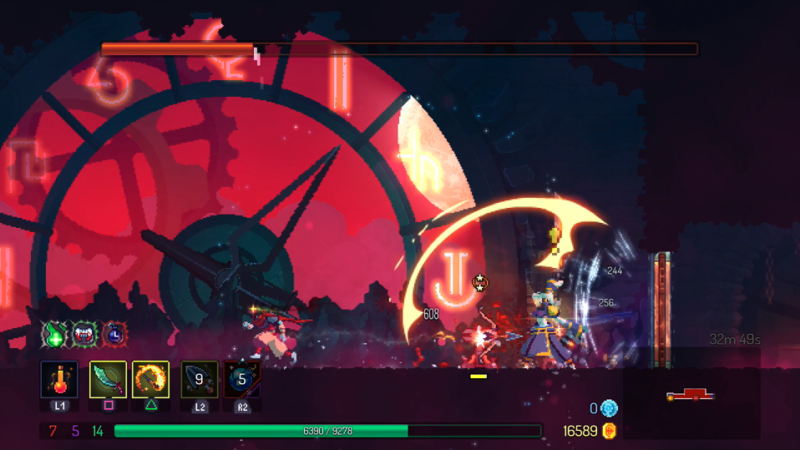
Combat provides the other half of the Dead Cells experience, and Motion Twin has found a nice balance between flashiness and substance. The controls are generally quick and responsive, but there’s also a degree of input delay built into the different weapons. Even smaller, faster weapons have a deliberate timing to their attacks that you need to master if you want to survive against stronger enemies or groups of lesser foes. There are many variations of the main weapon types in the game, distinguished by special effects they offer, like setting enemies ablaze or poisoning them. Shields provide a choice between staunch protection from incoming attacks, or the ability to parry those attacks with precise timing for a stun. On death, most enemies explode into gold, gems, and bloody bits in a spectacular manner that helps keep fights satisfying across several hours of play. Most combat takes place at melee range due to most enemy types being some variant of a swordsman or shieldbearer, but there are some interesting ranged weapon options for players to experiment with, just as some enemies provide interesting ranged threats with homing magic and timed bombs. One weapon lobs flames that spread across the ground, and another produces ice blasts that freeze enemies on contact. In another nod to Castlevania, there are multiple sub-weapons that provide more combat versatility in the form of different grenades, bear traps, turrets, and more.
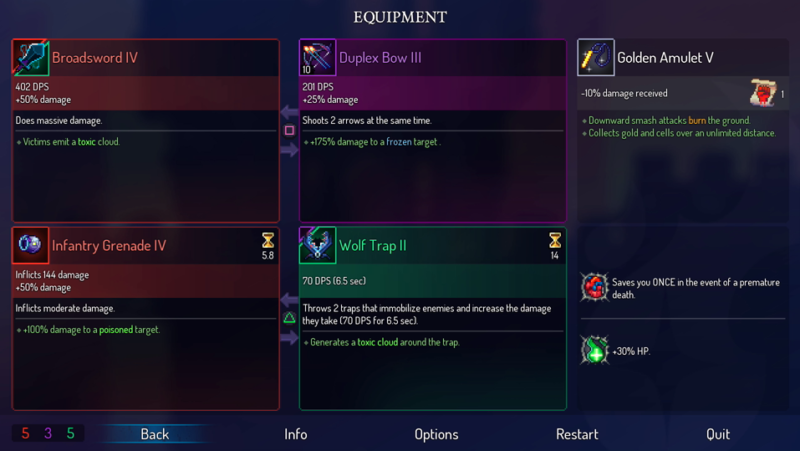
The game deals out these different weapons and sub-weapons randomly. You never know what you’re going to find in the next big treasure chest or at the next store. Similarly, levels are full of randomized stat boosting scrolls that let you choose one of three stats (Brutality, Tactics, and Survival) to upgrade for a bonus to health and weapons associated with the stats you pick. You make the most of what you can find and hope that all of your tools will synergize well enough that you can overcome the game’s bosses and win. The bosses, particularly the last, are energetic, challenging showdowns that require taking advantage of all of your abilities. The combination of skill-based combat with randomized progression elements makes for an appealing adventure that will attract players who want to be challenged consistently without ever having the same experience twice in a row.
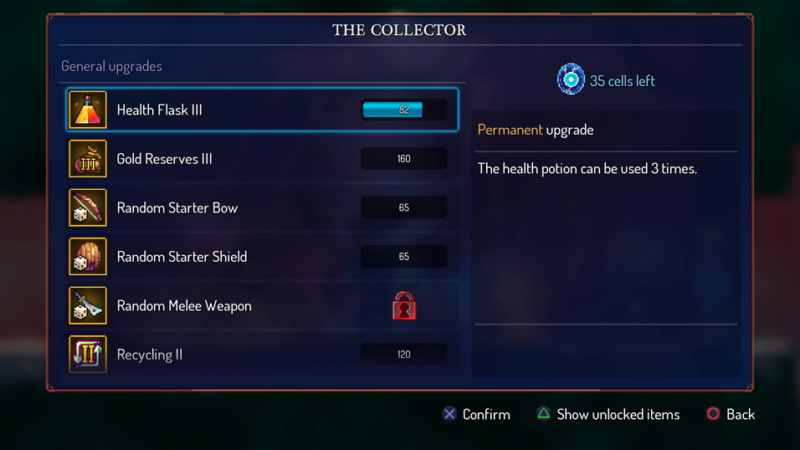
Now, with the basis of Dead Cells’ gameplay strengths established we can get into the nitty gritty. The challenge faced by all roguelikes and their hybrid descendents the roguelites is that the same randomized progression that can be deeply appealing at times can also backfire into repetitive monotony if too little changes between playthroughs. Dead Cells tackles this mostly by tying most of the player’s progress to big blue cells that enemies have a decent chance of dropping upon death, which can then be taken to NPCs that provide permanent bonuses to your character. The cells also pay for unlocking new weapons and items that you must first discover from blueprints that are mostly found as secrets, rewards from treasure chests, or gifts for defeating a major boss. If you die before reaching the little NPC hub between levels, all of your cells and held blueprints are lost and must be earned again. The cost for buying access to these discovered upgrades soon becomes surprisingly expensive when weighed against the number of cells you’re likely to get in one successful playthrough. This means a lot of the buffer against tedium and stagnancy in Dead Cells, namely the random weapons and items, are gated off by several mandatory playthroughs where you must collect lots and lots of cells. And if you keep dying, the number of playthroughs dedicated mostly to unlocking new stuff only increases.
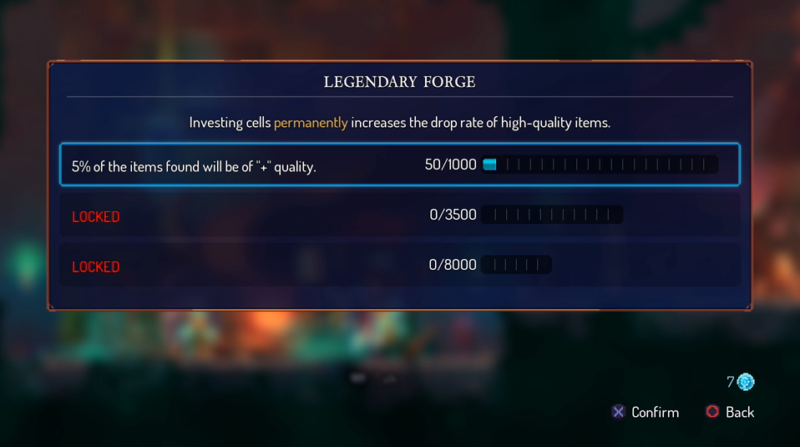
The levels themselves don’t have all that much structural variation between playthroughs, and you’d be forgiven for not recognizing that Hallway 512 now has both a corridor leading to the right and a pit of spikes below it instead of just an elevator leading up a couple floors. Fortunately, the stylishness of the art direction, music, and enemy types makes these different levels satisfying to play in their own right, randomization or not. The problems only emerge after several playthroughs of these same levels once environmental patterns and enemy placements start to become too familiar.
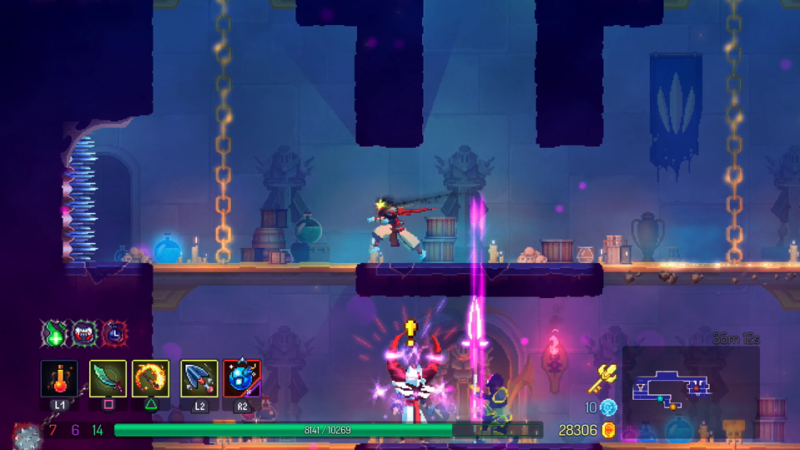
Dead Cells is a solid game, to be sure, but it’s hardly a modern classic. It continues the roguelite trend within the indie games sector we’ve been caught up in for a decade now, and it does a fine job of delivering that familiar, double-edged experience of fun and frustration. The visuals, music, and combat are worth a few victorious playthroughs, but whether you’ll have the interest and patience to grind out all of the content beyond that is another question entirely.
8/10
Take a Look at the Dead Cells Launch Trailer:
Dead Cells is available for Nintendo Switch, PS4, Xbox One, and PC (Win/Mac/Linux) via Steam for $24.99 (USD). Packed with extra goodies, limited quantities of the Dead Cells boxed edition are available from Signature Edition Games.
PlayStation 4 Review
-
Overall Score - 8/108/10
I've been gaming for 22 years, ever since my mom picked up a secondhand NES, and I've played on just about every gaming platform out there since. I think video games are one of most innovative and artistic mediums in the world today, and I'm always curious how developers will surprise me next.


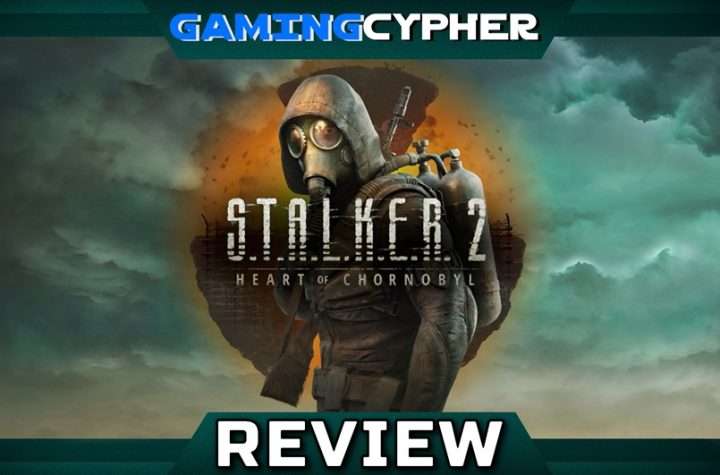
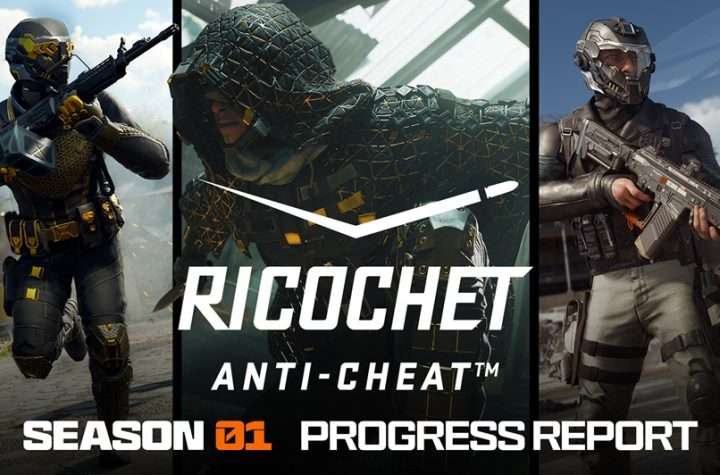
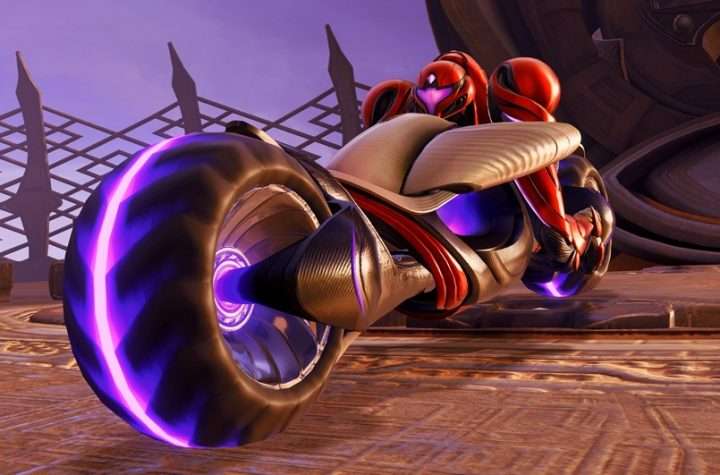
More Stories
GTA Online: A Safehouse in the Hills Heading to PlayStation, Xbox, and PC on December 10
S.T.A.L.K.E.R. 2: Heart of Chornobyl Review for PlayStation 5
Call of Duty: Black Ops 7 and Call of Duty: Warzone Season 01 Now Live along with RICOCHET Anti-Cheat Update